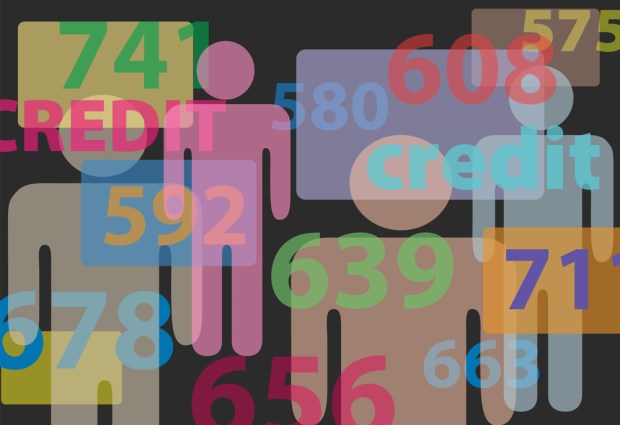Priming The NearPrime Credit Pump

No one is born with an 800 or 400 credit score. As many as 50 million Americans pass through the 600 to 700 score rang at some point in their financial lives. And in the latest Data Drivers, Houman Motaharian, Chief Revenue Officer at LendingPoint, tells PYMNTS’ Karen Webster that all credit is not created equal in an era of low savings.
Can the credit cycle, on a smaller scale, be as individual as a person’s life cycle?
Mash the two together and you get the credit cycle of life.
In the latest Data Drivers, PYMNTS’ Karen Webster spoke with Houman Motaharian, chief revenue officer at LendingPoint, about the ways credit is used, for good or ill – literally. More on the cryptic illness comment in a bit (we’re talking health care here). The stats show that traditional lending models may overlook responsible borrowers who fall into a wide band of credit scores.
Data Point One: 57 Percent
This is the percentage of Americans with less than $1,000 in their savings accounts – hardly enough to weather the financial shocks that may be felt through car accidents, sickness or unemployment.
Income disparity is at work here, said Motaharian, and average income across the past 15 years shows the top 40 percent have benefitted from gains that eclipse those seen by the lower 60 percent.
The fact that people have meager savings reflects the fact that incomes have not been keeping pace with the cost of living. It is also expensive to be poor in America, he said, as overdraft and other banking and financial product fees can mount and cause economic pressure.
Even with access to credit products, the financially strained – the aforementioned consumer with less than $1,000 in the bank who suddenly has a medical emergency to the tune of $2,500, for example – find it tough going. Motaharian said that credit cards can top out at $2,500, with credit limits actually decreasing as utilization gets boosted.
Serving this population proves difficult, he told Webster, as data is either lacking or inconsistent – and banks, he said, need to listen to the specific customer needs of this sub-segment.
Data from TransUnion says there are 196 million consumers who have access today to some type of revolving credit via bank or private label. Meanwhile, 143.5 million of those consumers revolve those balances, which have grown by 7 percent year over year. There are some signs that the pace of origination of those credit accounts is waning, due to banks’ wariness about who should get credit.
Though millions of consumers have access to credit, he said, not everyone has the same level of access.
Said the executive, overall, having credit at work in the overall financial system benefits everyone, as “it is a bridge to the future.” However, both sides of the equation – lenders and consumers alike – need to be responsible. “Overleverage is never a good story for anybody,” Motaharian said.
Data Point Two: 50 Million
This is the number of people in the U.S. who are near prime – and who, according to Motaharian, fall within the 600 to 700 FICO band, as defined by their credit scores. At some point, credit users have passed through this stratum – not an insignificant number, given the 200 million FICO scores floating around.
“This is the cycle of life,” said the executive, noting that the 600 to 700 range can be seen as a hallmark of self-employed individuals – or those scores could reflect tough events, such as a divorce or recent bankruptcies.
Data Point Three: 10,000
This is the number of attributes that Motaharian says are needed to truly assess a “near prime” individual’s ability to use credit responsibly. The aforementioned 600 to 700 range is one that may show a journey – but, as Webster asked, how to know that it is not a way of life (and one that may prove costly to creditors)?
Said the executive, lenders usually start with credit bureau data – and trade lending shows at a high level how much people spend on a car, or a mortgage, or on credit costs. Lenders are using what can be viewed as the “out of pocket” behavior of the consumer. The reality is that a substantial amount of data for those within the 600 to 700 FICO band crosses several different bureaus, with relationships in place with different institutions – all in a fragmented manner.
A holistic view is in order, said Motaharian, and one aided not just by the historical lens, but also by artificial intelligence, among other technological advances.
One key tell that might escape traditional lending mindsets: how consumers use their money. In one case discussed by Webster and Motaharian, getting credit in place to help defray medical costs has the ultimate goal of improving a person’s health.
This, Webster said, seems to be more of an investment, with the goal of getting the money, making improvements and paying it back. Could such conscientiousness spur a different lender viewpoint than might simply conducting route commerce with merchants? A medical need can be immediate, and surgery may require financing at several points, Motaharian said. This is one area where LendingPoint seeks to streamline (and speed up) the credit process.
In all, said the executive, with the 600 to 700 consumer, it is important to listen, understand their needs and try to fulfill them. Somebody with an 850 FICO, Motaharian said, is very easy to serve, since they have access to credit whenever they need it. In serving the near prime consumer, he said, with the aid of technology, “there are a lot of good things out there” to use – along with “time, persistence and patience.”
